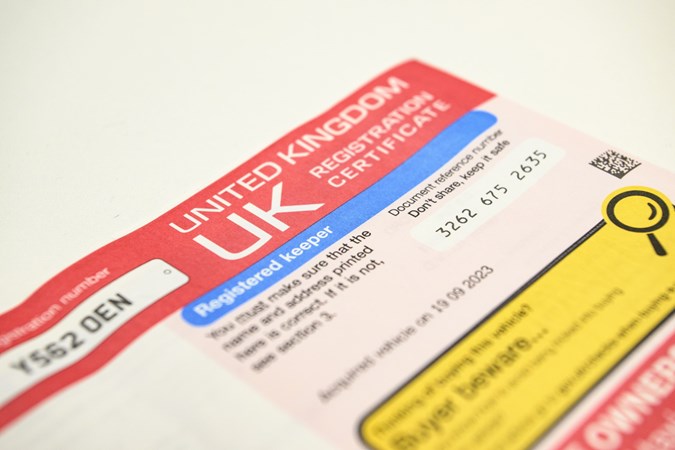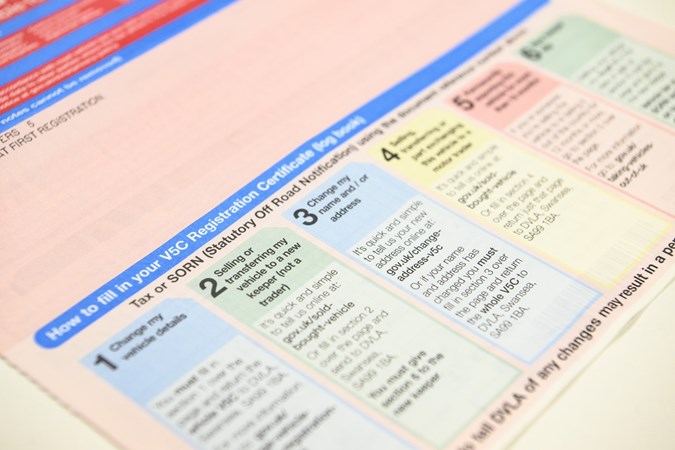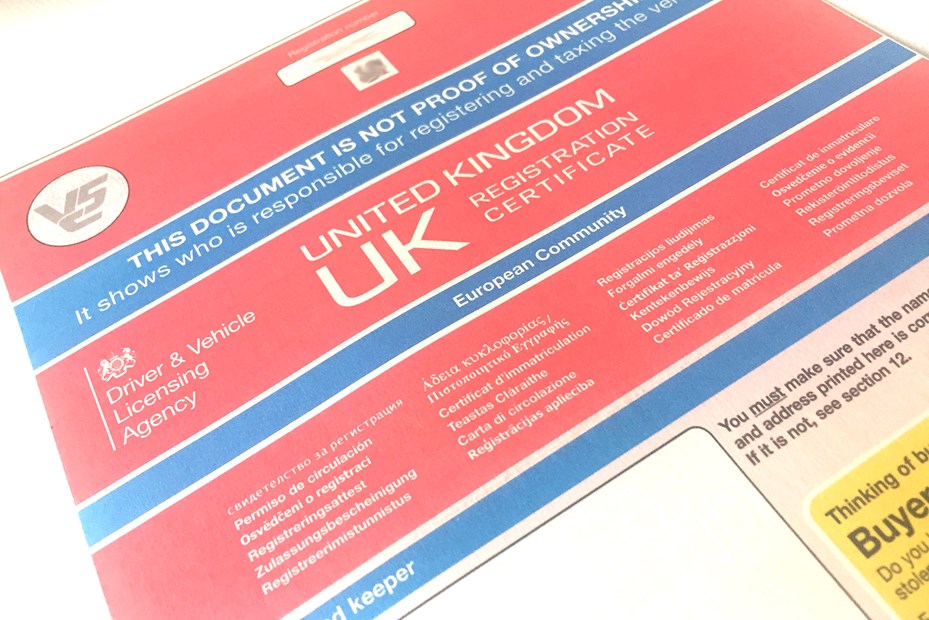The V5C registration document is the single most important piece of paperwork to keep with your car. It provides useful information about the car and, crucially, who is legally responsible for it. You also need to be in possession of your car’s current V5C when you want to sell it on.
The document is issued by the Driver and Vehicle Licensing Agency (DVLA) when a car is first registered, every subsequent time it has a new keeper, and if any significant changes are made to it. Note that we’re not using the word ‘owner’ here – we’ll explain why in a bit. The V5C essentially ties a car to a particular person and their address, therefore they are the primary contact for any official correspondence, and for any offences or fines attached to it.
The format of the V5C changed in 2019. We’re going to focus on the current version of the document in this article, however there is a section that covers the changes between the old and new style of V5C.
What information is on a V5C?
The front cover of a V5C registration document shows the car’s registration number, the name and address of the current keeper, the number of former keepers and any other relevant notes about the vehicle. In most cases, the only note will be ‘declared new at first registration.’

Inside the V5C, you’ll find a lots of legally required information about the car. That includes its make and model, details about its engine and emissions, which legal classifications it’s in, its colour, and its vehicle identification number (VIN) and engine number. There are various other sections of a V5C document that we’ll cover in a bit.
Is the V5C proof of ownership?
No. Indeed, on the front cover of a V5C you’ll see the following: ‘This document is not proof of ownership. It shows who is responsible for registering and taxing the vehicle.’ The DVLA refers to that responsible person as the vehicle’s keeper.
If that sounds a bit nebulous, there’s an easy way of making the distinction between a car’s owner and its keeper. The owner is the person or company who paid for the car. The keeper is the person who has use of the car.
Let’s say you pay for a car in cash and are the only person who uses it. You are both its owner and keeper. If you pay for a car in cash but your partner has use of it, you are the owner but your partner is the keeper. If you get a car on a PCP or PCH finance deal, the finance company owns the car and you are its keeper.
If you’re unsure how to make the distinction, it’s best to think of it in terms of the legal situation you wish to be in. For instance, in a divorce, if both partners’ cars are registered in the name of one of them, they are considered assets of that person. The other partner would be left without a car, even if they bought it and pay for all the running costs.
Is a V5C a logbook?
You’ll sometimes come across individuals and traders who refer to a car’s logbook. They actually mean its V5C. Logbook used to be the official term for a car’s registration document, but it hasn’t been used by the DVLA for many decades.

What’s the difference between a V5 and a V5C?
As with logbooks, a V5 and V5C are one and the same. V5 is also a rarified engine cylinder configuration that Volkswagen tried and failed to popularise in the late 1990s.
What are the numbered sections on a V5C?
Beyond ‘vehicle details,’ there are six sections to a V5C. They can all be used to inform the DVLA of any changes to a car’s keepership status, the keeper’s details, or significant changes made to the car.
Section 1 informs the DVLA of any changes made to the car’s specification. That includes being painted or wrapped in a different colour, or having a new engine fitted. You can also change a car’s taxation class to that of a disabled vehicle or tax-exempt historic vehicle (once it reaches 40 years old).
Section 2 can be filled out when you sell your car to a private individual (not a trader) with their contact details and the date of sale. Section 3 is used to inform the DVLA that you have changed address. Section 4 is for informing the DVLA that you’ve part-exchanged or sold the car to a registered motor trader. Section 5 lets the DVLA know that the car has been permanently exported out of the UK. And Section 6 is the ‘new keeper slip,’ which you must have possession of in the gap between buying a car and receiving a new V5C with your name and address on it.
If you fill out any of the forms, they must be posted to the DVLA. Depending on the form, you’ll receive confirmation of the change or an updated V5C within three weeks. There are online versions of the forms available if you prefer. We have a full guide to registering a new keeper that explains every step of the process.

When do I need a new V5C?
V5C documents don’t expire. However, you must inform the DVLA when you move house, or if you make any significant changes to the car such as change its colour, or fit a new engine. Once the changes have been logged, the DVLA sends out a new V5C showing the new details.
What if I’ve lost my car’s V5C?
This can happen quite easily, especially in a house move or if a car has been off the road for a long time. Fortunately, you can order a new V5C from the DVLA online. You just need to provide your details and some information on the car, including its VIN.
If the VIN can’t be found, it can still be possible to get a new V5C, but it’s not an easy process. There’s also a procedure for informing the DVLA if a new V5C gets lost in the post. Whatever the circumstances, a new V5C costs £25.
How has the V5C changed?
The format of the V5C registration document changed in April 2019. Most of the changes simply tidied up the layout to make better use of the space available. However, there are some changes that affect the process of changing a car’s keeper.
It used to be necessary for both the new and existing keeper to sign the V5C, as well as filling out the new keeper’s details. Then the document had to be sent back to the DVLA. The new keeper slip also had to be filled out with that person’s name and address. None of that is required on the current V5C. If you still have the older style of V5C, it’s not necessary to send off for one in the current format. The same goes for even earlier formats of V5C.
Just so you know, we may receive a commission or other compensation from the links on this website - read why you should trust us.










